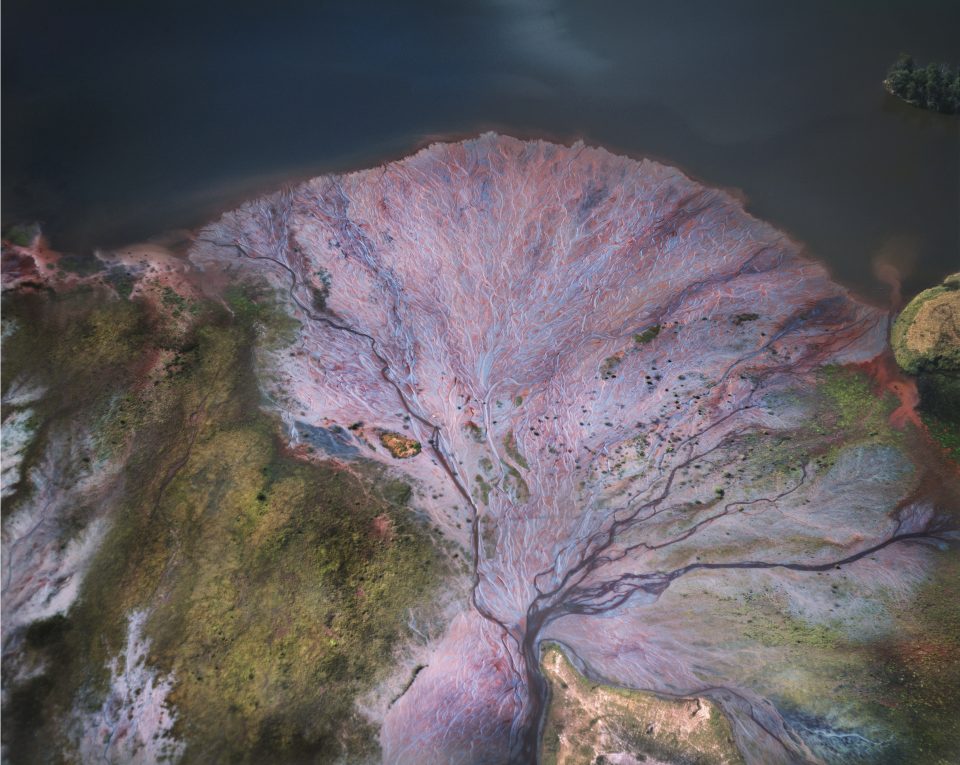While we know that the moment is now to bring ecological awareness and activism to the heart of political and cultural life, the Earth’s fragility and our own villainous role in its demise is a subject that before and after Al Gore, has been a mood-killer to broadcast. How refreshing then that FotoFest, the photography biennale in Houston, Texas (this year in it’s 16th iteration) has taken on this gloomy theme and made it exciting again with Changing Circumstances: Looking at the Future of the Planet.
Under the passionate gaze of founding directors Wendy Watriss and Frederick Baldwin, who have long been interested in showcasing this topic, and the Biennale’s executive director, Steven Evans, the festival takes a fresh angle on climate change by focusing on what’s poetic, mysterious, wondrous and awe-inspiring about the natural world in works by 34 photographers from 9 international countries. Spanning four designated buildings and many other participating spaces across the city, we are offered a globalized glimpse at what Kant meant when calling “the greatness beyond all possibility of calculation, measurement or imitation”, the sublime.
Images like Archiving Eden, Texan artist Dornith Doherty’s ongoing photographic collaboration with renowned biologists in the international seed banks of the world, which feature large-scale seed diaries that feel like visual interviews with the seeds themselves and impart both their beauty and their wisdom. Here, we are moved to consider what a higher-order these small life forms are—containing as they do hundreds of years of survival intelligence—and to feel how little we are, and how little we know, when face to face with the mystery of our own food chain.
Elsewhere, magic enters British artist Gina Glover’s Deep Time, who in expanding her documentation of energy procurement (from coal to nuclear power) illuminates the almost sentient melting of the glaciers, which she captures sinking and encircled by misty auras. Mandy Barker (UK) aestheticises waste in provocatively beautiful photos of beach trash. Processed Views by Barbara Ciurej and Lindsay Lochman (US) takes aesthetics further by creating fictive food topographies in images that feature heroic marshmallow mountains, bologna outcrops and Fruit Loop rivers. More classically, Edward Burtynsky (Canada) and Nigel Dickinson (UK) tell memorable visual stories of real industrialized and garbage-filled landscapes respectively, while Chris Jordan (USA) compellingly documents the plastic ingested by albatross birds. Ingo Günther (Germany) makes frightening statistics novel by plotting them on colourful globes that he alights in gentle hues inside a darkened room.
A standout work of video art by Berlin-based artist Niklas Goldbach is Land of the Sun. Filmed in California City, a dream-city conceived in 1965 by sociologist-cum-entrepreneur Nat Mendelsohn in the Mojave Desert with the aim of being crafted into an artificially architected utopia—this American Dream is now dead. As we witness the barrenness of the scenes, a couple who continue to live there, seemingly alone and clutching to this faded ideal amidst 300 kilometres of abandoned homes and shops, desert dust and reptiles, narrate the reasons why they love living there (there’s no traffic jam, there’s no line up). What begins by making us laugh slowly becomes despair as the follies of hubris and human dreams, beside the enormity of biology’s reality, hits a universal nerve of terrible powerlessness and loneliness.
By being both scientific and spiritual, the ensemble of these oeuvres (and many other Biennale highlights that aren’t referenced here) straddle a new frontier where art functions as a political tool and also as an oracle. In keeping with the extreme nature of the challenges we face in turning the climate crisis around, what they seem to be saying is: we need to be extremely local to be global, extremely sensual to be sublime, and extremely funny to be sad in delivering this crucial message. If plants, animals and machine are no longer seen as being activated by our gaze, but as acting and evolving in concert with us and perhaps even way beyond that, in fact making us actors in their subtle, superior plan — then art may be the interface where sublimity joins human thought with a higher intelligence that we sense, but can’t otherwise touch. In this case, when American artist Peter Fend’s parting word-art asks, “Can Art Perform And Not Just Be Noticed?” we feel among the roundup of this year’s FotoFest that yes: it can and it should.
Changing Circumstances: Looking at the Future of the Planet is showing in several venues across the city of Houston, Texas, until April 24, 2016. Accompanying FotoFest’s Bienniale exhibitions are over 100 independently organized shows at spaces including the Contemporary Art Museum Houston; Museum of Fine Arts, Houston; the Station Museum of Contemporary Art; and the Menil Collection. Fpr more information visit www.2016biennial.fotofest.org
Words by Caia Hagel
Credits
1. Goldbach, Land of the Sun. Courtesy of the artist.





